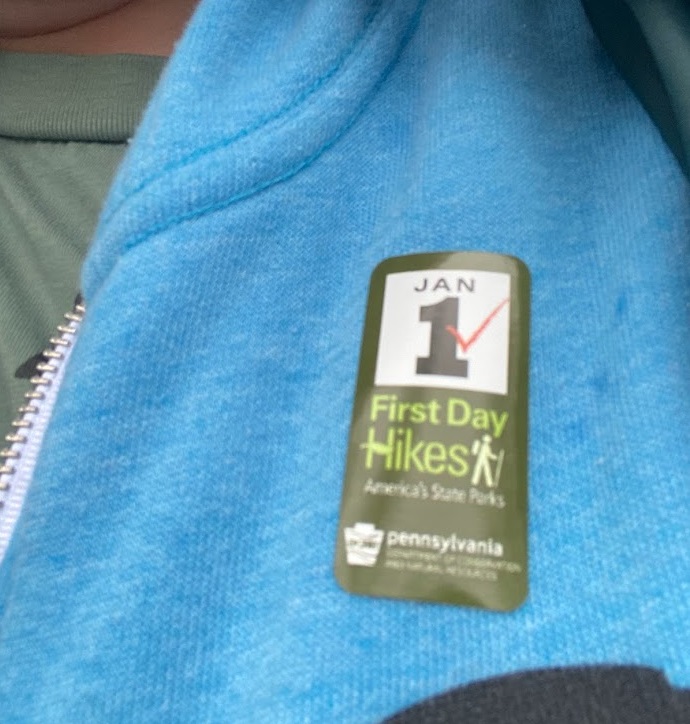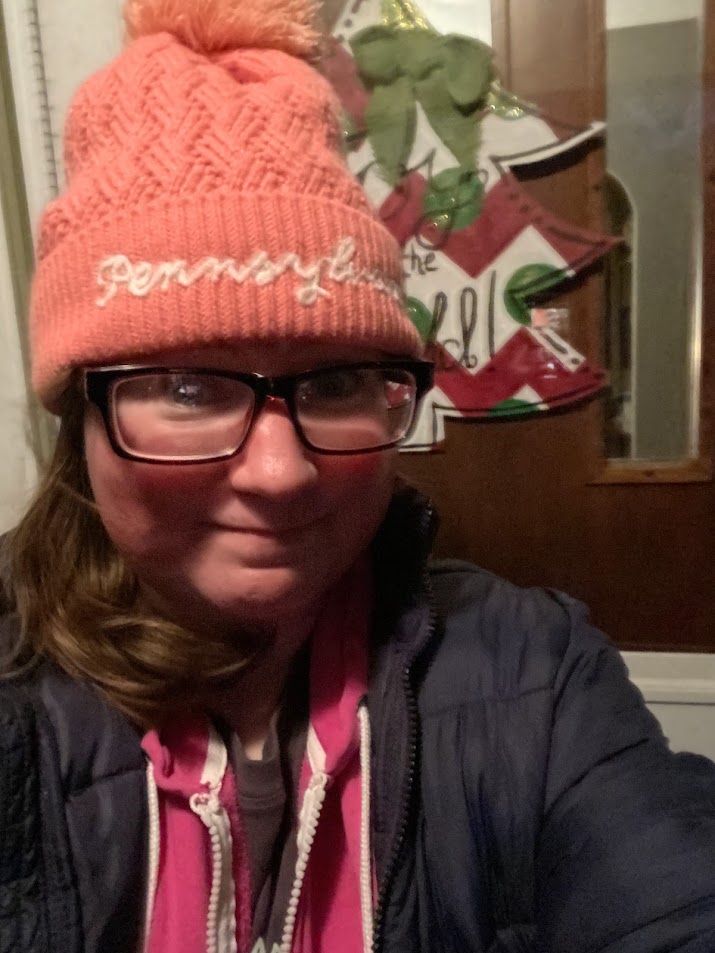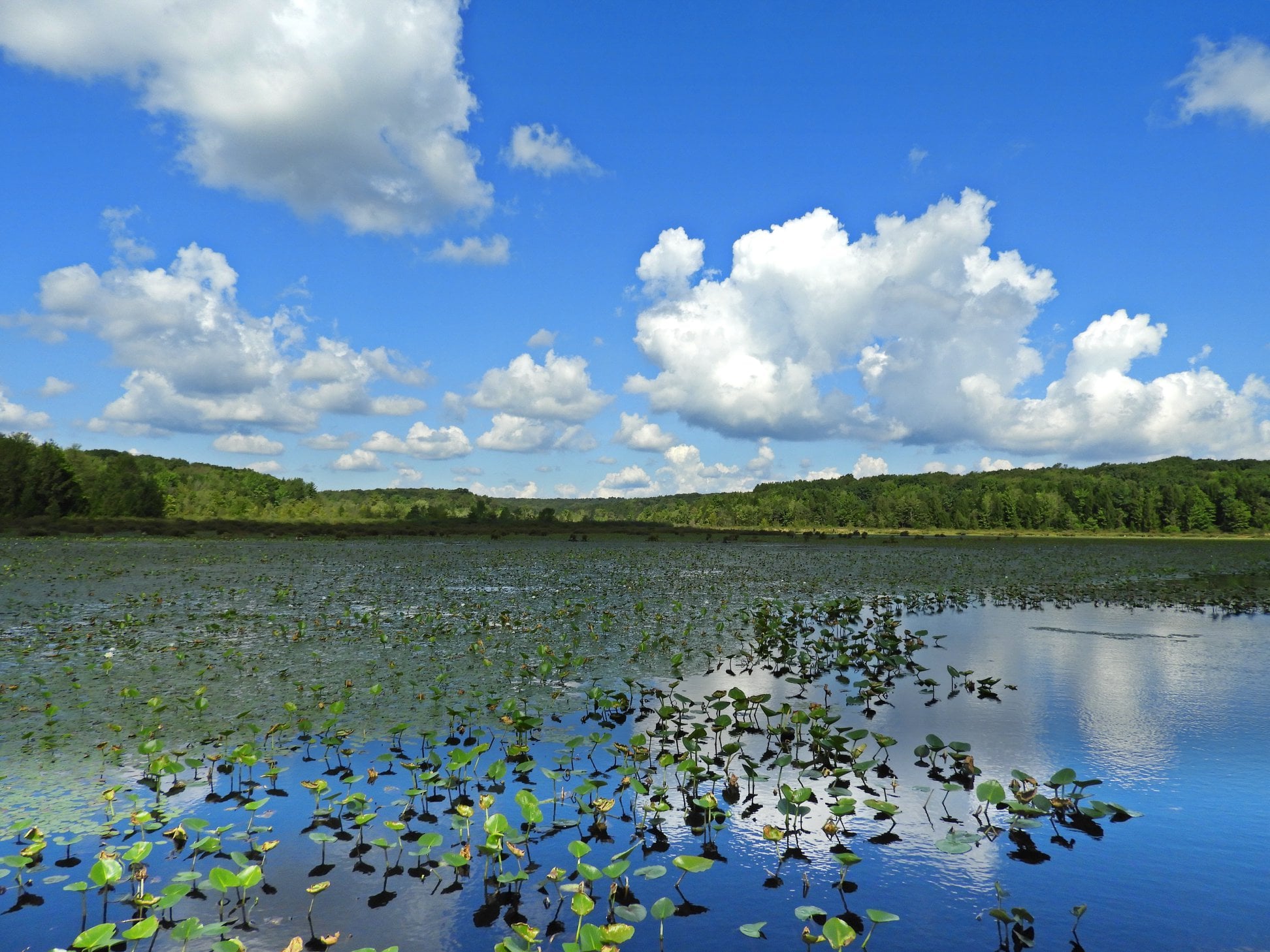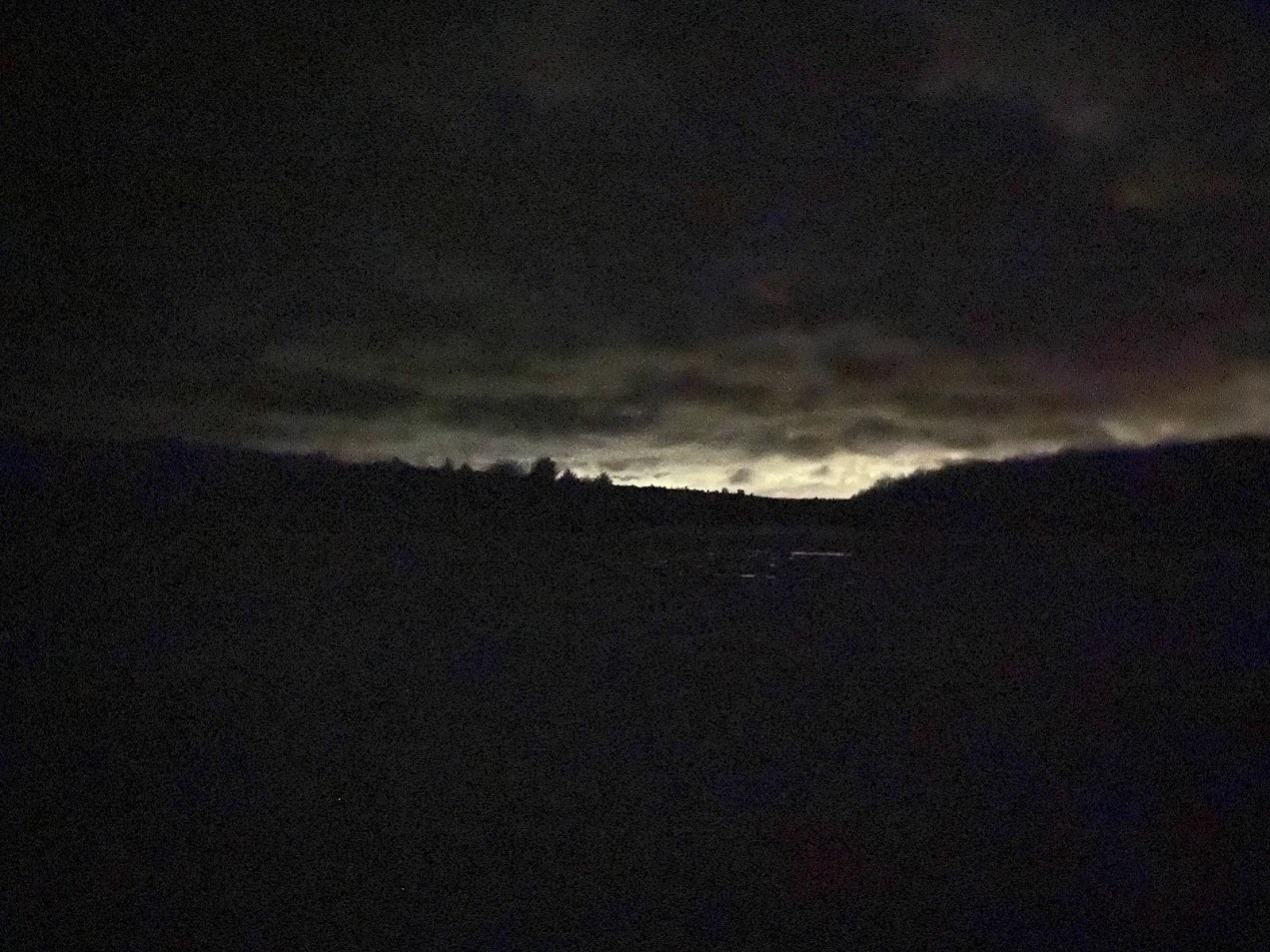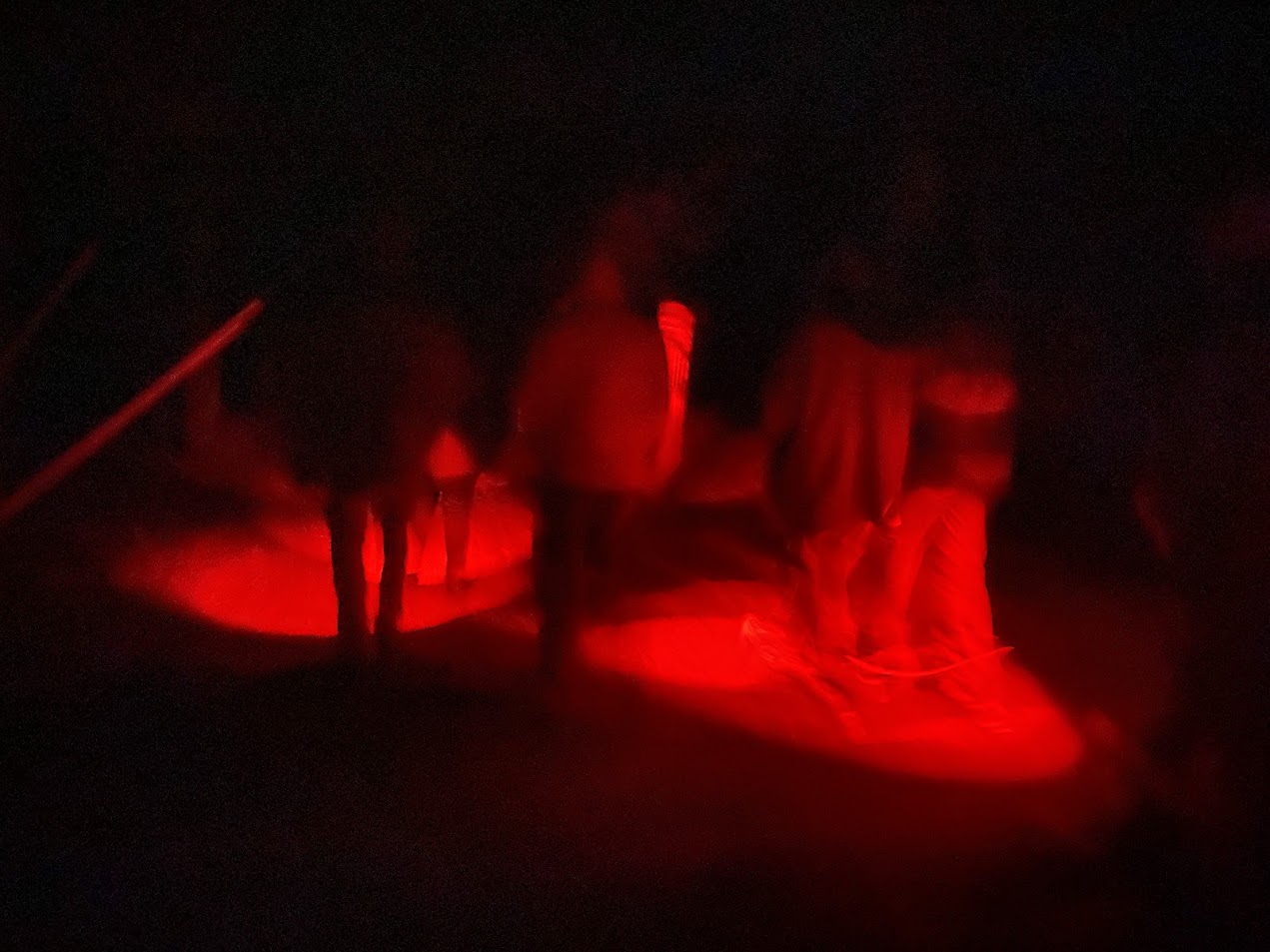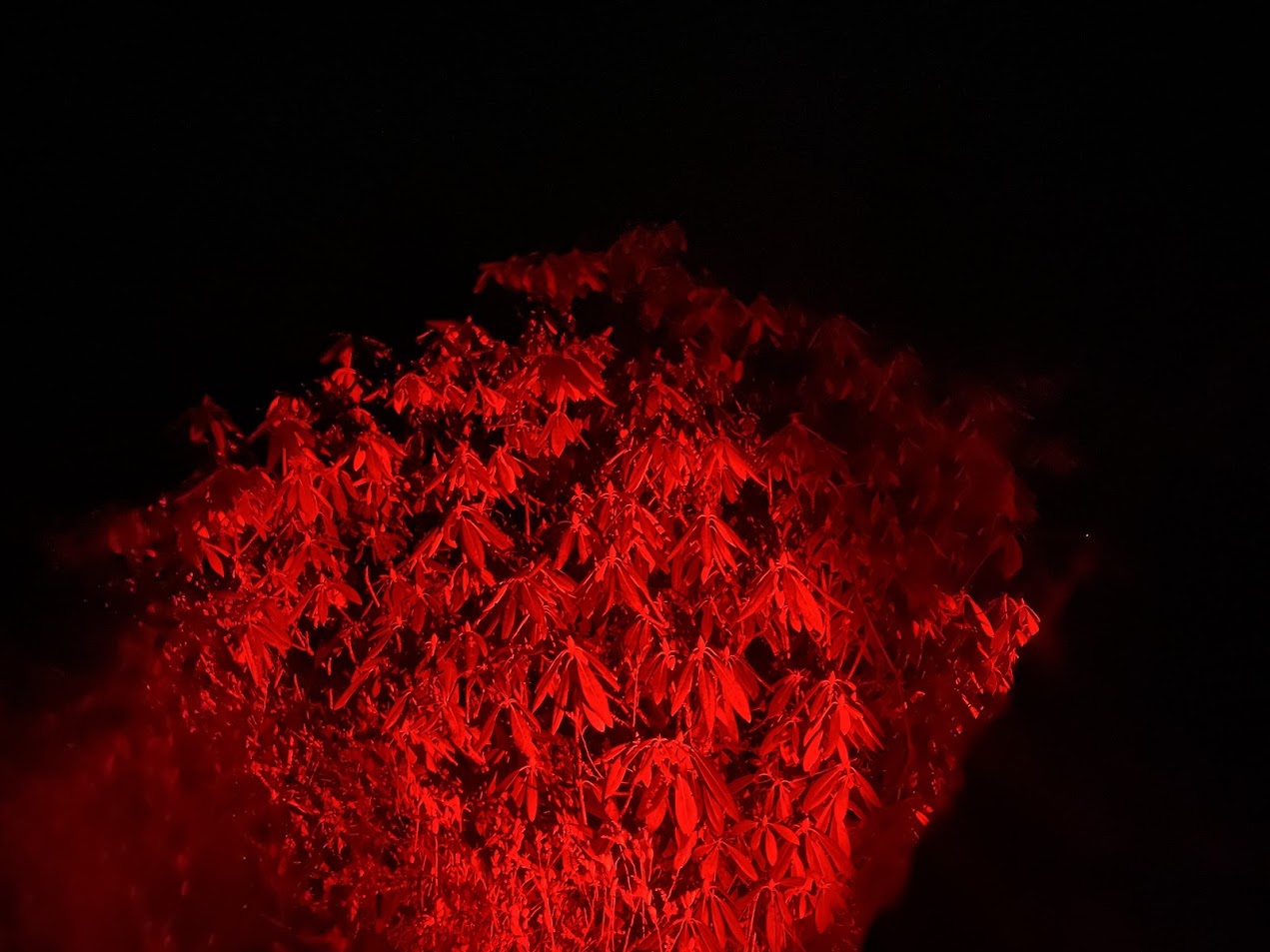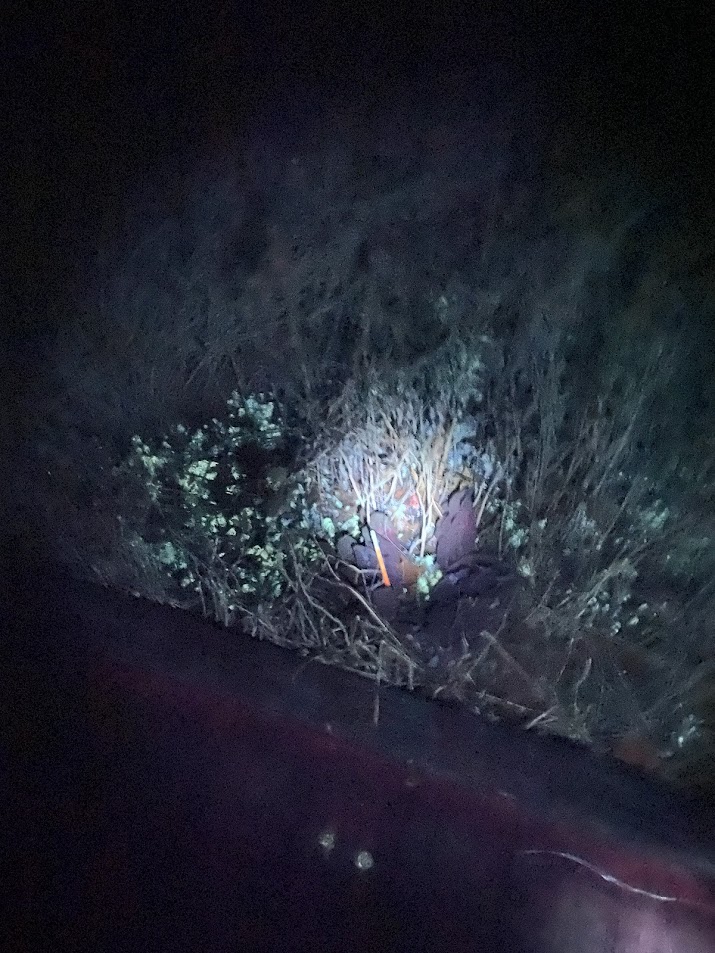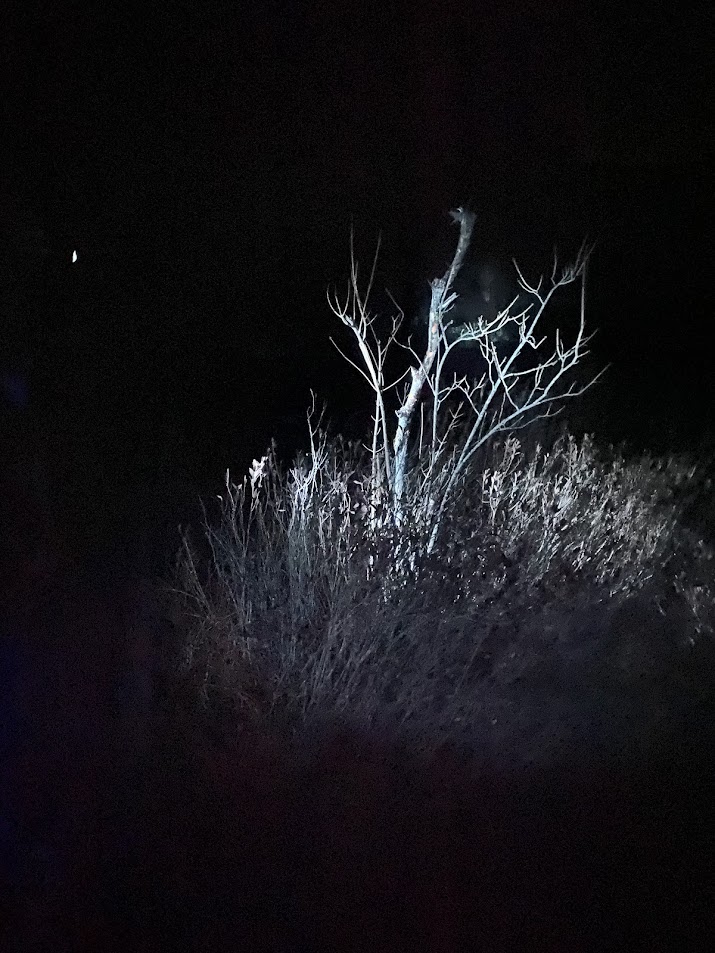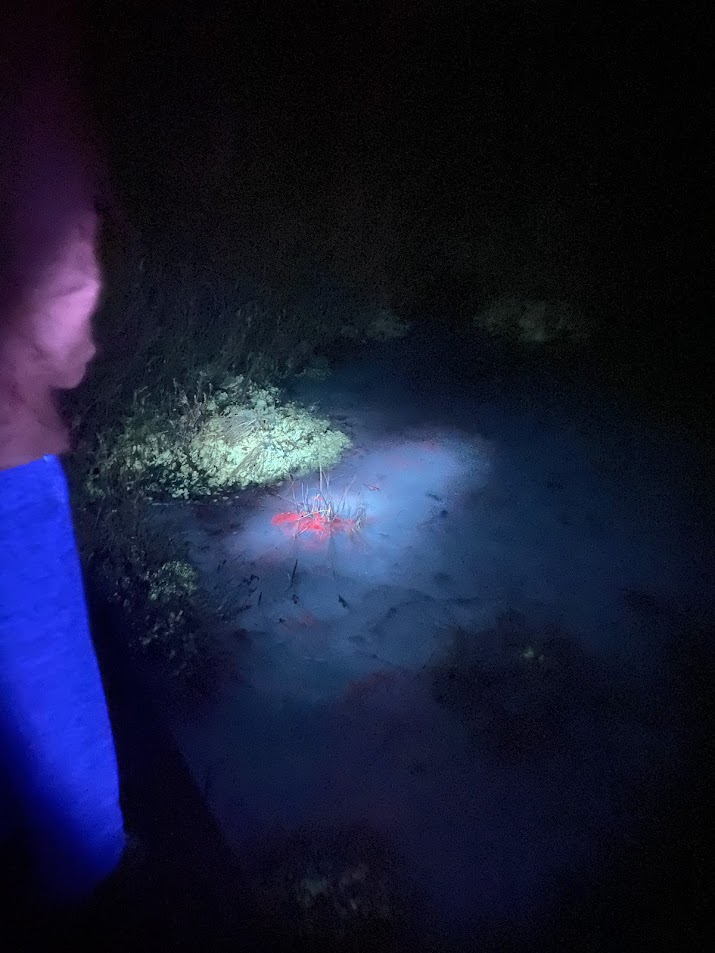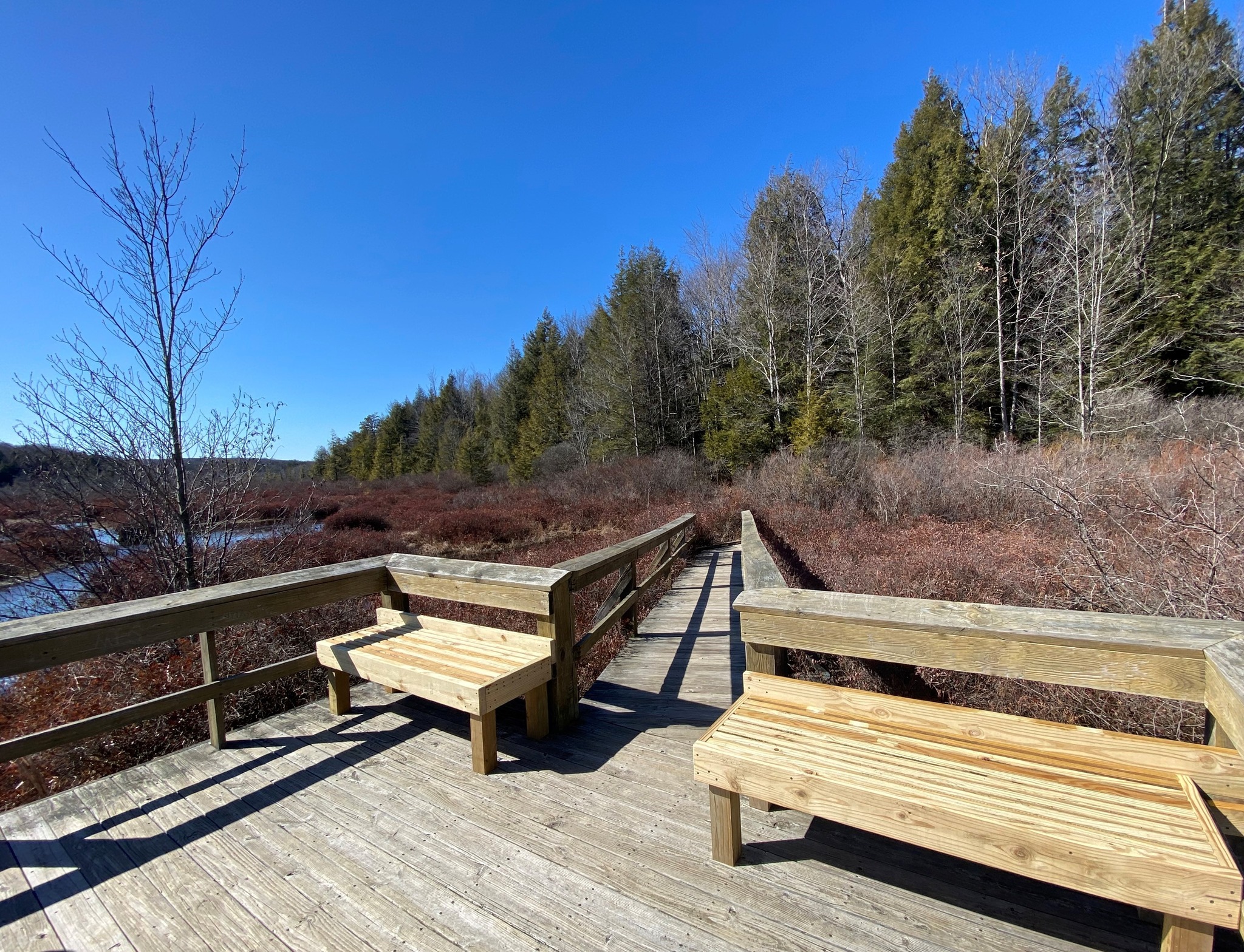The dawn greeted a new year on Wednesday, but my real New Year’s Day celebration started after the sun set on the first day of 2025.
Although I’ve done daytime hikes as part of the First Day Hike initiative in years past (like my hike at Parker Dam State Park in 2024), this was the first time I was beginning the new year with a special night hike.
Image: Britt’s First Day Hike sticker from 2024
Black Moshannon State Park, which is located along the I-80 Frontier landscape in the southern part of the Pennsylvania Wilds, decided to hold two UV light night hikes for their First Day Hike in 2025.
“Take a hike on the boardwalk to see the unique plants and animals that call the bog home. UV lights will be provided to view the plants on the walk back. Limited to 20 people. Pre-registration required,” the description read. As soon as I learned about it in December, I quickly made a reservation and marked it on my calendar.
Black Moshannon State Park, or “Black Mo” as locals refer to it, covers 3,394 acres of forests and wetlands that provide recreational opportunities for thousands of visitors. The park conserves unique, natural environments and is in Centre County on PA 504, nine miles east of Philipsburg. More than 43,000 acres of the Moshannon State Forest surround the park and help create a remote and wild setting.
When the first day of January arrived, I was admittedly feeling less enthusiastic about the hike than what I had felt while signing up for it. The day had been cold, and the temperatures were steadily dropping as the sun set.
Still, I put on my puffy coat and beanie and headed out. After all, I had promised myself to get out and do more hikes this year. In fact, I had signed up for the 52 Hike Challenge! What precedent would it set if I skipped out on my very first hike of the year?
Image: Britt sets out for her UV night hike at Black Moshannon State Park
It would take me about 35 minutes to drive to Black Mo to get there in time for my 6:30 hike, and it was dark and chilly as I started up the car. According to me, driving at 6 p.m. might as well be midnight when it comes to Pennsylvania winter. Although I had been to Black Mo multiple times in the daylight, I had never ventured there at night. I carefully navigated my way to the parking area near the Bog Trail, where we would be making our hike.
The Bog Trail is an ADA-accessible boardwalk that winds around the wetland. This is the perfect spot to find interesting and sometimes rare plants. The area is dominated by sphagnum moss and leatherleaf and accented by sedges, rushes, carnivorous plants, and lilies – all of which we would get a chance to see on the hike, even in the dark.
Michelle McCloskey, the environmental education specialist at Black Moshannon State Park, was waiting for all of us at the parking lot by the Bog Trail, shining a red light near a picnic table there. I turned off my headlights and walked over to the group of hikers, my eyes slowly adjusting to the dark.
Image: Black Moshannon Lake in the daylight
Michelle handed us each a red light flashlight, which would help to light our path while still preserving our night vision… and the night vision of any creatures we might see along the wetlands.
She pointed out the glow on the horizon in the distance. “That glow is State College. If you know anybody who lives there, tell them to turn off their lights so we have a nice dark hike,” she joked.
Image: The glow of State College on the horizon at Black Moshannon State Park
Michelle also gave us a UV flashlight, though she told us to stash it in our pockets for later in the hike. On the way to the end of the boardwalk’s outlook, we would use our red lights and talk about the plants we see along the way. Then, on the way back, we would use our UV lights to check out which plants glowed.
Black Moshannon State Park does these UV night hikes at other times of the year, often in the summer time. However, Michelle said that this winter night hike would offer some new views that could only be seen during the colder months. It also offered a different experience for a “First Day Hike” than other parks could. For people looking to have a slightly unique experience, it was perfect and drew a different kind of crowd.
The intrepid group of night hikers, about 15 of us total, were a quiet bunch. There is something about being in nature in the dark that just makes you a little more reserved. Maybe it’s not being able to see the other hikers’ faces very well. Maybe it’s our ancient caveman brains telling us to keep an ear out for wild animals. Maybe it’s the instinct to not break the delicate, almost holy silence of the night air.
Image: The group of hikers at Black Moshannon State Park, using red lights to navigate
Michelle warned that the boardwalk could be slippery due to the recent sleet, but we took our time and watched our steps as we walked along the wooden path. Though you wouldn’t want to step off of the boardwalk regardless (you’d end up with muddy wet feet from the bog!), we also knew it was important to stay on the path as one of the 7 Principles of Leave No Trace: Travel and Camp on Durable Surfaces.
Our red flashlights helped guide our feet, and they also helped us spot interesting plants that Michelle pointed out along the way.
The first plant was a hands-on experience. “Feel the leaf and tell me if it reminds you of anything,” Michelle said. “It’s named after a type of material. Some of you might be wearing it right now.”
We made a few shy guesses, but it took us a few tries until we found the correct answer: leather. Leatherleaf is a common shrub in bog and wetland areas. It has tiny white bell-shaped flowers in the spring, but loses them before winter. However, it retains its sturdy leaves throughout the entire year, though its leaves do shift from green to reddish-brown in winter then back to green in spring.
As we walked along the boardwalk, Michelle shared what makes bogs and wetlands so special. Although it was dark and I couldn’t see her face, I could hear the smile in her voice… this is a woman who legitimately loves bogs.
Along the path, Michelle pointed out other important plants. Sphagnum moss is the star of the show when it comes to bogs. This moss is excellent at storing water in its spongy form, and it prevents the decay of dead plant material. Eventually, sphagnum moss turns into peat moss. Peat moss is a compressed layer of decomposing moss. If you’re a gardener, you’re probably familiar with peat as a way of amending your soil’s PH levels or improving its water retention.
Image: A rhododendron bush along the bog trail at Black Moshannon State Park, lit by the red flashlights during the night hike
This sphagnum also slowly releases tannins into the water around it, turning the water dark. These tannins make things decompose more slowly, preserving things like fallen wood or even leather… in fact, “tannic” and “tanning” such as “tanning hides or leather” come from a common root word and tannins are used in the tanning process! The tannins in the waters of Black Mo also make the water glow under the UV light.
Michele also pointed out some carnivorous plants that would glow under our UV lights, including a purple pitcher plant. Its stalk, now devoid of its purple flower in winter, glowed a strange orange color under the light. During spring and summer, the purple pitcher plant has a deep cup with backwards hairs that trap insects inside.
Black Moshannon State Park is home to three out of the five most common carnivorous plants that exist in North America. The other two, besides the pitcher plant, are bladderwort and sundew. Bladderwort, explained Michelle, often will get stuck to your canoe if you’re paddling on the water of Black Moshannon. To have somewhere so scientifically unique so close to my home is a real treasure.
Image: The stem of a purple pitcher plant glows orange under UV light during a night hike at Black Moshannon State Park
Lichens are another unique thing you’ll find in bogs like Black Moshannon. Lichens are a complex life form that is a symbiotic partnership of two separate organisms, a fungus and an alga. They also happen to glow under a UV light. We found that different species of lichens glowed in slightly different shades or colors under the lights.
We shuffled our way with our red flashlights to the outlook point on the bog’s boardwalk, and then we gathered together near the benches to try out our UV lights. The purple-tinged lights were bright and helped not only light our way but also make some of the unique plants glow in white, yellow, green, or orange colors.
We took a moment to shine the lights on different parts of ourselves: our fingernails, shoelaces, watches, and socks. Michelle half-jokingly warned to be careful about using a UV light in your home and definitely not in a hotel room. Lots of things (including urine and other bodily fluids) glow under a UV light. In fact, we found that the outlook point that we were standing on had plenty of orange spots on it… evidence of how many dogs use the walkway as their favorite bathroom location.
Image: Shining a UV light to try to find things that glow during a night hike at Black Moshannon State Park
The discovery of the pee spots was met with laughs, and the grossness quickly wore off in favor of awe as we walked back. On the walk out, Michelle had pointed out plenty of locations that would be good spots to use our UV lights. Now on the walk back, it was clear that she knew all the most exciting places. We found more interesting glowing spots along the way too: tree bark with fungus, sap on trees branches, powder on rhododendrons, and more.
My favorite part, however, was using the UV light on the water. The dark water suddenly turned a milky white when we shined the UV light on it, and you could see it gently swirling as the breeze rippled the water. It reminded me of the kinds of bioluminescence that you see on the science channel or travel documentaries, but this special glow was luckily within just a short drive of my home.
The gentle snow got heavier as we made our way back to the cars, and our group of hikers was eager to get back on the roads before travel conditions got too slick. We thanked Michelle, and she noted that we were all welcome to come back for more daylight winter activities some other day.
Image: The water at Black Moshannon State Park glows a milky white under UV lights during a nighttime hike
During winter months, loaner equipment is available at the Black Moshannon State Park office. Items may be borrowed during office hours, Monday to Friday, 8 a.m. to 4 p.m. and most weekends between 1:30 p.m. and 3:30 p.m. You must provide a valid ID.
Ice skates are available when the designated ice skating area is open. This area is monitored and maintained at Boat Launch #1.
Cross-country skis are available when snow cover is 4 inches or more and showshoes are available when snow cover is 6 inches or more. Youth sizes are available.
Of course, the boardwalk along the bog is great any time of the year for an accessible and interesting walk. Be aware that the boardwalk can be icy or slippery during winter weather. Be sure to also dress warmly, as the trail along the water can be colder or windier than other trails.
If you’re not up for a winter hike, keep Black Moshannon State Park in mind for their summertime UV hikes. You’ll still get to see the glow of unique plants, without the chilly winter.
Keep an eye on the PA State Parks and Forests calendar of events for interesting activities for you and your family, at Black Moshannon State Park and other public lands throughout the PA Wilds! Many of these opportunities are completely free and a great way of getting outdoors and learning something new.
Image: Benches along the Bog Trail boardwalk at Black Moshannon State Park
Author: Britt Madera
Britt joined the PA Wilds team as communications manager in 2022, helping to tell the stories that make our region so unique, whether that is covering our beautiful landscapes, the innovative businesses, or the spunky people that call it home. She had worked the last 10 years in radio and news broadcasting, and now she’s continuing to connect media outlets with positive news stories. Britt oversees external communications, media relations, and paid and volunteer content on the blog. As someone who grew up in Clearfield County and moved back shortly after college, Britt is eager to share her passion for the PA Wilds and help our area grow and shine.



